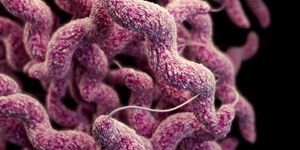Sterilizing Mosquitos with CRISPR to Control Disease
Mosquitos—including Aedes aegypti—facilitate the spread of bloodborne diseases the world over and cause hundreds of thousands of deaths a year according to the World Health Organization, making control of the mosquito population a critical public health objective. Using CRISPR-Cas9 gene editing, researchers from the University of California at Santa Barbara have presented a new target for sterilization of male Aedes aegypti in Proceedings of the National Academy of Sciences.
By flooding the breeding population with genetically manipulated sterile males, scientists hope to outcompete fertile wild males by sheer volume. This method—called the ‘sterile insect technique’—has effectively controlled populations other species, including the Mediterranean fruit fly that plagued California agriculture. Since only female mosquitos bite, a rash of additional males wouldn’t act as vectors for human disease.
Previous SIT experiments with Aedes aegypti have been limited by the techniques used to sterilize the males—namely radiation and chemical exposure, which had the unintended side effect of making the ‘trojan horse’ males weaker and less successful at mating.
The PNAS study is the first to use CRISPR-Cas9 to target male Aedes aegypti, authors say, rendering them infertile by knocking out a gene expressed in the testes. Lab experiments in which infertile males outnumbered their wild-type cousins by 5:1 reduced female fertility by 50%, while at a ratio of 15:1 female fertility plummeted 80%.
The authors emphasize that suppressing a single generation with the sterile insect technique wouldn’t significantly impact population numbers, even if fertility is reduced to 20% of normal levels—SIT must be repeated in successive seasons.
Other studies have targeted genes common to male and female Aedes aegypti, including a 2020 PLOS experiment that resulted in flightless females unable to mate or spread disease. Homozygous males were, however, still able to fly and pass on their defective genes to subsequent generations.








